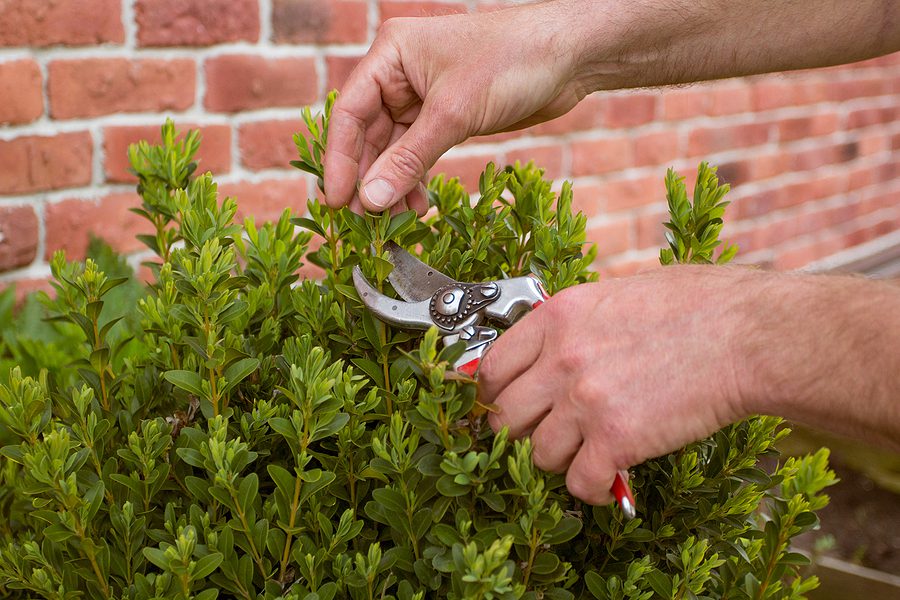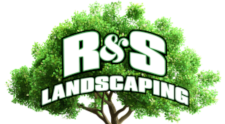What’s the Best Way to Prune Bushes and Shrubs?

Discover the right way to prune shrubs and hedges and bring new life to your landscape. Keep reading so that you will be able to properly maintain the plants in your garden (and more!) with these great tips for butterfly bush pruning and a lot more.
When to Prune
- When or if a plant blooms will help determine when you should prune.
- Prune early-spring blooming shrubs once they have finished blooming for the year.
- Prune summer blooming plants in the winter or early spring.
- After new growth is fully developed, prune nonflowering plants.
General Shrub Pruning
Damaged, dead or infected stems are a detriment to shrubs and plants; all of these feed insects. You will want to pinch them off as you see them.
Phase 1: Lay Out a Tarp
Before you get started, put a tarp down to make the cleanup easier.
Phase 2: Prune Strategically
Cutaway any growth you don’t want and loosen spots on the thick outer cover. The inner limbs need air and sunlight, so prune back along the branch just above new growth or at the plant base. Electric trimmers should be avoided in this Phase as trimmers only take off the end of the branch and new growth is stimulated at the cutting point. Instead, cut further back to promote new growth along the branch.
Phase 3: Assess the Shrub’s Shape
Prune away dead branches near the base. If you can, don’t allow the top to be wider than the base of the shrub, for it’s crucial that sunlight reaches it all the way around. Remove only about a third of the shrub each year. Eventually the holes you cut will be filled in with new growth, increasing the size and health of the plant.
Formal Shrub Trimming
You can also shape bushes, like box shrubs, for a more traditional appearance. First get the general trimming as above. Next, follow these Phases.
Phase 1: Plan Straight Lines
Stakes are driven around strings to assist in trimming shrubs.
For straight lines, a house, siding or another object can give you a straight edge. Some professionals get a head start with stakes and string as a guide.
Dial stakes into position and string them along the hedges, but don’t drive them too deeply into the shrub cover. For perfectly straight lines, line up the strings with a level.
Phase 2: Use a Hedge Trimmer
Pass a pair of hedge trimmers slowly across the top and side of the bush; the blade should do the work. Keep the bottom of the bush wider than the top for best sun exposure. Step back occasionally to assess your work and adapt your pruning method, if needed.
Upright Plant Trimming Tips
Wide upright hedges: Privet, hawthorn, buxus (box) and escallonia hedges are common wide upright hedges.
Prune these vertical hedges twice a year: in spring and early autumn. Hold off on pruning a flowering hedge back until it has finished blooming. For annual or biannual pruning, you can also cut away any dead branches.
Trimming Your Deciduous Hedge or Shrub
Deciduous hedges and shrubs Often these consist of hydrangeas, butterfly bushes, lilac bushes, beech hedges, or forsythia hedges, or a mix of those.
For the most part, the pruning of deciduous hedges or shrubs is reduced to a clearing or thinning of the plant, which can stimulate the growth of new laterals on the branches that remain.
This is when you cut the branch at its base with a good pair of hedge clippers or shears. As for deciduous hedges, concentrate on keeping them shaped the way you want them or recycle any diseased or damaged stems you find.
Hydrangeas
When to prune a hydrangea depends on the variety. Some, including bigleaf hydrangeas, bloom on old wood.
This type of hydrangea is best pruned after it has finished flowering for the season, which is usually early fall. Instead, prune hydrangeas that bloom on new wood, like smooth hydrangeas, in early spring.
Cut back some of the dead wood on bigleaf hydrangeas, but leave some for new blooms. If you want to shrink it a bit, you can trim and take out a third of it.
If you’re pruning a smooth hydrangea, it will produce a lot of little blooms. Shape it light pruning. If you cut the plant back even more, say a foot or so above the ground, you will get bigger flowers, but there will be fewer of them.
Butterfly Bushes
Sometime in the spring when you see new growth, cut back your butterfly bush. Though some folks like to prune their butterfly bushes in early fall, we don’t recommend it in colder climates, where an ill-timed trim can put the bush at risk of damage over the winter.
Lilac Bushes
Lilac Bush Form Lilac bushes might have an odd and round shape. Prune your lilac bush as soon as it’s done blooming in the spring. We wouldn’t advise pruning a lilac bush in midspring or the early fall.
Beech Hedges
Cut back beech hedges in early June to thicken the bush. Then, trim anew in early August to encourage new leaf growth. Top should taper more narrowly to allow sun for the whole hedge.
Forsythia Hedges
An occasional light cutting can help to forsythia hedges maintain a rounded shape. For a hedge that offers maximum full flowers, prune forsythia hedges after they have finished blooming. Make sure to do your pruning before mid-July to give the plant time to create new buds.
Evergreen Hedge Trimming
When you prune and trim evergreen hedges, be sure to preserve the plant’s natural shape. Try thinning the hedges by removing portions of the individual branches, instead of shearing several branches all at once.
Trimming yields a more natural look that’s easier to maintain. Narrow-leaved evergreens like pines and junipers don’t need to be pruned as much.
Trim back these plants every year. Young pines may need the top whorl pruned back to a bud in dormancy to even out growth. Broad-leafed evergreens like azaleas and pyracantha are also low maintenance. Direct your annual maintenance to pruning out old or weak stems and to sculpt the plant to your own liking.
Good to Know
Evergreens will really appreciate an annual pruning while they are small, instead of waiting until they’re large (in the case of your yew) or need severe pruning (in the case of your rhododendrons). The focusing strategy is: if you see a dead branch, get rid of it.
Useful Hedge and Shrub Trimming advice
A hedge trimmer with an extended reach and pivoting will help you reach high hedges and shrubs as well as areas of the plants that are hard to reach. One or two string trimmers will accept a hedge trimmer attachment that has that feature.
Lopping off the thickest branches is a good first step when pruning old, overgrown shrubs. Trim them back to the base of the shrub to encourage regrowth.
Use hand pruners for smaller branches. Some can cut branches up to one inch in diameter, but stave off unnecessary frustration by investing in long-handled loppers that allow you to exert plenty of leverage and cut branches 1 to 2 inches in diameter. To learn more about hand pruning tools, please read our Garden Tools Buying Guide.
Prune deep in the jaws of the pruner or lopper. This approach provides more cutting force to you. Cut clean if you can, to heal faster.
If you get frequent snow, make sure to cut the tops of hedges and shrubs into rounded shapes so snow doesn’t weigh them down.
